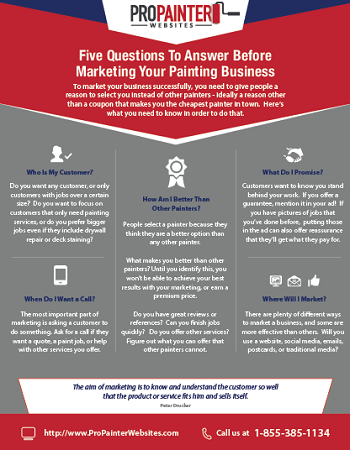Understanding Seasonal Influences On Commercial Exterior Paint: Essential Knowledge For Success
Understanding Seasonal Influences On Commercial Exterior Paint: Essential Knowledge For Success
Blog Article
Post Author-Ford Whalen
When you're preparing an industrial exterior paint job, seasonal factors can make or damage your results. You'll wish to take into consideration exactly how temperature level and humidity impact paint application and drying times. Picking the ideal period can ensure your paint sticks correctly and lasts longer. However which seasons are truly the most effective for this kind of work? Let's check out the crucial elements that can impact your project's success.
The Effect of Temperature on Paint Application
When you're planning a business exterior paint job, the temperature level can dramatically affect just how well the paint sticks and dries.
Preferably, you want to repaint when temperature levels vary in between 50 ° F and 85 ° F. If it's as well chilly, the paint might not treat appropriately, bring about concerns like peeling off or fracturing.
On the flip side, if it's as well warm, the paint can dry out also promptly, preventing proper bond and leading to an unequal coating.
interior painting services minneapolis, mn must also take into consideration the time of day; early morning or late afternoon uses cooler temperatures, which can be a lot more beneficial.
Constantly check the manufacturer's recommendations for the details paint you're making use of, as they frequently offer advice on the optimal temperature range for ideal outcomes.
Moisture and Its Effect on Drying Times
Temperature level isn't the only ecological element that influences your industrial external paint job; moisture plays a substantial function also. High humidity levels can decrease drying times dramatically, affecting the general top quality of your paint job.
When the air is filled with wetness, the paint takes longer to heal, which can cause issues like bad attachment and a greater risk of mold growth. If you're painting on an especially moist day, be planned for prolonged delay times in between layers.
It's crucial to check regional weather conditions and plan appropriately. Preferably, aim for humidity levels in between 40% and 70% for optimal drying out.
Keeping painting estimates chicago in mind ensures your project remains on track and provides an enduring finish.
Best Seasons for Commercial Outside Painting Projects
What's the most effective season for your industrial outside paint jobs?
Spring and early autumn are normally your best bets. During these periods, temperature levels are light, and humidity degrees are commonly reduced, developing suitable problems for paint application and drying.
Avoid summer's intense heat, which can create paint to dry also quickly, causing poor adhesion and surface. In a similar way, winter season's cool temperature levels can prevent appropriate drying and curing, taking the chance of the durability of your paint work.
Aim for days with temperatures in between 50 ° F and 85 ° F for ideal results. Remember to check the local weather forecast for rainfall, as damp problems can ruin your task.
Planning around these aspects guarantees your painting job runs smoothly and lasts much longer.
Conclusion
Finally, intending your industrial outside paint jobs around seasonal considerations can make a considerable distinction in the outcome. By scheduling work during the perfect temperature levels and moisture levels, you'll guarantee better bond and drying out times. Keep in mind to keep an eye on regional weather forecasts and choose the correct time of year-- spring and very early fall are your best choices. Taking these actions will aid you achieve a durable and professional surface that lasts.
